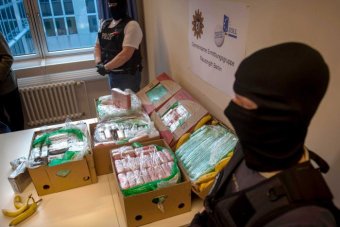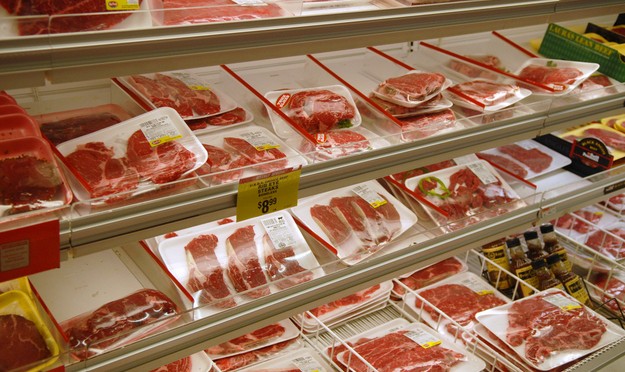1.

Supermarkets often put red “discount” signs in their car parks, so you’re familiar with their format before you enter. Once you’re inside, the same sort of red signs don’t always denote a price reduction. But, because of the association you’ve already formed, you’ll be more inclined to buy the product.
2.

Shopping trolleys, which were invented in 1938, are purposely much larger than the average family’s weekly food shop. This encourages you to buy more food than you need.
3.

Fruit and vegetables are usually positioned at the supermarket’s entrance. Although this doesn’t make sense for the shopper, who will crush their fresh shopping with heavier items later, the fresh smells and bright colours of fruit and veg make you feel positive. Plus, if you buy healthy food at the beginning of your shop, you’re more inclined to spend more on junk foods later.
4.

Loose fruit is often priced by the kilogram, whereas packaged fruit is priced by the item. This makes it difficult for you to work out which is the cheaper option.
5.

Fruit and vegetables are often displayed in crates to make them look like they have just arrived from the farm.
6.

Vegetables are often sprayed with a water mist throughout the day to make them look fresher.
7.

Flowers are also positioned at the supermarket’s entrance, usually in a more open display than food. This reminds the shopper of being in a local store and makes them feel less overwhelmed by the size of the shop which, in turn, encourages them to spend longer there.
8.

Most supermarkets position baked goods near their front doors. The smell of fresh bread activates your salivary glands, which makes you more inclined to make impulse purchases.
9.

Essential items, such as bread, milk, and eggs, are spread out all over the store in order to make you wander around more.
10.

They use smaller floor tiles in the more expensive aisles to make your trolley click faster. This makes you think you’re travelling faster, so you subconsciously slow down and spend more time in the expensive aisle.
11.

Dairy products are usually positioned against the back wall, so you have to walk through the entire shop to get to them, encouraging you to pick up more things on the way.
12.

Since most supermarkets make you move from right to left, you’re naturally inclined to buy things from the right-hand aisles. The most expensive products are placed there.
13.

Expensive items are positioned at eye level (1.6m above the ground), whereas items that are meant to appeal to children are positioned at their eye level. The cheapest items are positioned at the bottom of shelves, as you’re least likely to look there first.
14.

When you’re in a hurry, you’re likely to pick up bargains on the ends of aisles, rather than considering the best-priced options. Supermarkets will rarely place the cheapest products here.
15.

Complementary items, such as crackers and cheese or apple pies and cream, are positioned next to each other in order to encourage you to buy more than you intended.
16.

Meat and fish is often sold against a white backdrop, as this makes it look fresher.
17.

Visual cues, such as installing wooden shelves and nice lighting, make you more inclined to spend more money on quality products.
18.

Warm colours grab your attention and and encourage contemplation. Research shows that people contemplate which fruit juice to buy for a long time, so those aisles are painted red.
19.

Slow music makes you shop for longer, whereas classical music makes you spend more. Experiments have also shown that playing French music in the wine aisles increases the sales of French wines.
20.

Everyday items, such as socks and deodorants, are often placed near the tills as you’re likely to pick them up on an impulse, because you’ll need them at some point, even if you weren’t planning on buying them.
21.

Walk-through queues are often lined with things like chocolate, which you’re likely to pick up as a reward for yourself for doing the shopping













































Recent Comments